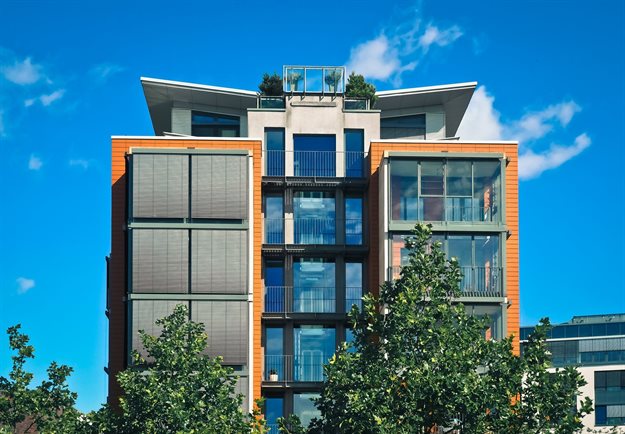We head into 2020 with little in the way of improvement in key leading economic indicators, suggesting to us that the commercial property market will likely see "more of the same" this year, "more of the same" meaning further rise in the average vacancy rate, pressure on rental growth, further real capital depreciation, and, single digit total returns.
In December 2019, Eskom load shedding reached an unprecedented “level 6”, which besides being a major disruptor to economy-wide production levels, will almost certainly have dampened general confidence levels going into 2020, and economies run on confidence to a large degree.
As it was, prior to the late-2019 bout of load shedding, we had seen the RMB-BER Business Confidence Index for the fourth quarter (completed in November) return another very weak 26 (on a scale of 0 to 100), only marginally up from its multi-decade third quarter low of 21.
The FNB-BER Consumer Confidence Index recorded a negative -7 in the fourth quarter of 2019, unchanged from the prior quarter’s weak level.
And late in 2019 we had the SARB Leading Business Cycle Indicator for October continuing to show year-on-year decline to the tune of – 1.7%, which points to likely ongoing economic growth weakness heading into 2020.
Limited scope for monetary and fiscal stimulus
And while growth stagnates, there exists very little scope for “easy” monetary or fiscal stimulus to provide, in order to boost economic performance. Granted, inflationary pressures are weak in this economic environment, and the SARB is easily achieving its CPI (Consumer Price Index) inflation target range of 3-6%, with November CPI inflation having come in at 3.6%.
This in turn did lead to a second 25 basis point interest rate cut this month, following on the first cut in July 2019. But with the prime rate already in single-digits at 9.75%, low by SA’s historic standards, the SARB appears to be a “reluctant cutter”, having moved very slowly in the current rate cutting cycle despite inflation being subdued.
On the fiscal side, National Treasury battles with sharply intensifying expenditure pressures, as financially pressured parastatals, most notably the electricity utility Eskom, request financial support from government. Given threats of further ratings agency downgrades and deteriorating investor confidence, the minister of finance is under pressure to trim government expenditure growth and find ways to increase tax revenues, which, while crucial, is growth negative in the short run.
The deteriorating government financial situation not only threatens the property sector via the negative impact of austerity measures on economic growth. A sharply rising government debt-to-GDP ratio, should it exert upward pressure on government long bond yields in the near term, could exert upward pressure on property capitalisation (Cap) rates, given the partial link between cap rates and bond yields.
In addition, the deterioration in the broader government finance, extending to parastatals and councils, is likely to translate into further above inflation hikes in municipal rates and utilities tariffs, implying upward pressure on two major areas of property operating costs.
The property sector thus experiences significant risks emanating from the state of broader government finance.
Outlook – Ongoing gradual real property value decline
FNB pins its hopes on some mild global economic “stabilisation”, and we have also had some very small interest rate cut stimulus domestically.
This leads to a very small lift in the forecast domestic GDP growth rate in 2020, from an estimated 0.3% for 2019 to 0.9%, but this remains a weak rate, still below 1%.
Despite this forecast of slight strengthening, we don’t believe it realistic to expect such economic growth to be sufficient to drive demand for commercial property space to a level where vacancy rates can stabilise or start to decline yet, nor do we believe that recent real property value levels can be sustained.
The average All Property Vacancy Rate of MSCI has been rising since the multi-year low of 5.2% reached in 2014, to reach 6.9% by 2018. 2014 was the year where GDP growth dropped to below 2% (recording 1.8%) for the first time since the 2009 contraction, and a further slowing to 1.2% in 2015 appeared to be the catalyst for the start of a rising vacancy rate trend.
Recent history thus suggests that, at some level of GDP growth close to 1%, the average vacancy rate begins to increase, and our sub-1% GDP growth forecast thus leads us to expect a further vacancy rate increase in the 2019 data as well as in 2020.
With this All Property Vacancy Rate rise would probably come further downward pressure on 2018’s already-slow 3.6% base rental growth rate (MSCI data). Indeed, more recently we have seen the MSCI half-yearly data for the 1st half of 2019 showing a further All Property Vacancy Rate increase on the prior semester.
Since 2014, MSCI All Property Capital Growth (growth in property values excluding capital expenditure on the properties) data has shown negative capital growth in real (GDP inflation-adjusted) terms for five consecutive years from 2014 to 2018.
The average property value per square metre (including capex), too, has shown real (GDP inflation-adjusted) decline more recently, recording consecutive negative growth years in 2017 and 2018.
Based on the FNB forecast of GDP growth remaining under 1% in 2020, and with a forecast of interest rates moving sideways from here on, following the recent January cut, we are of the expectation that the average All Property Vacancy Rate will rise further, rental and net income growth will slow under the economic pressures, and real property value decline will continue, all part of a gradual correction in property values to bring the market more into line with the weak economic fundamentals of recent years.
All Property Total Return (based on MSCI historic data including both capital growth and income return) is thus forecast to decline further, from 9.8% in 2018 to (an estimated) 8.3% for 2019 (datapoint not yet available) and 7.5% in 2020.










































